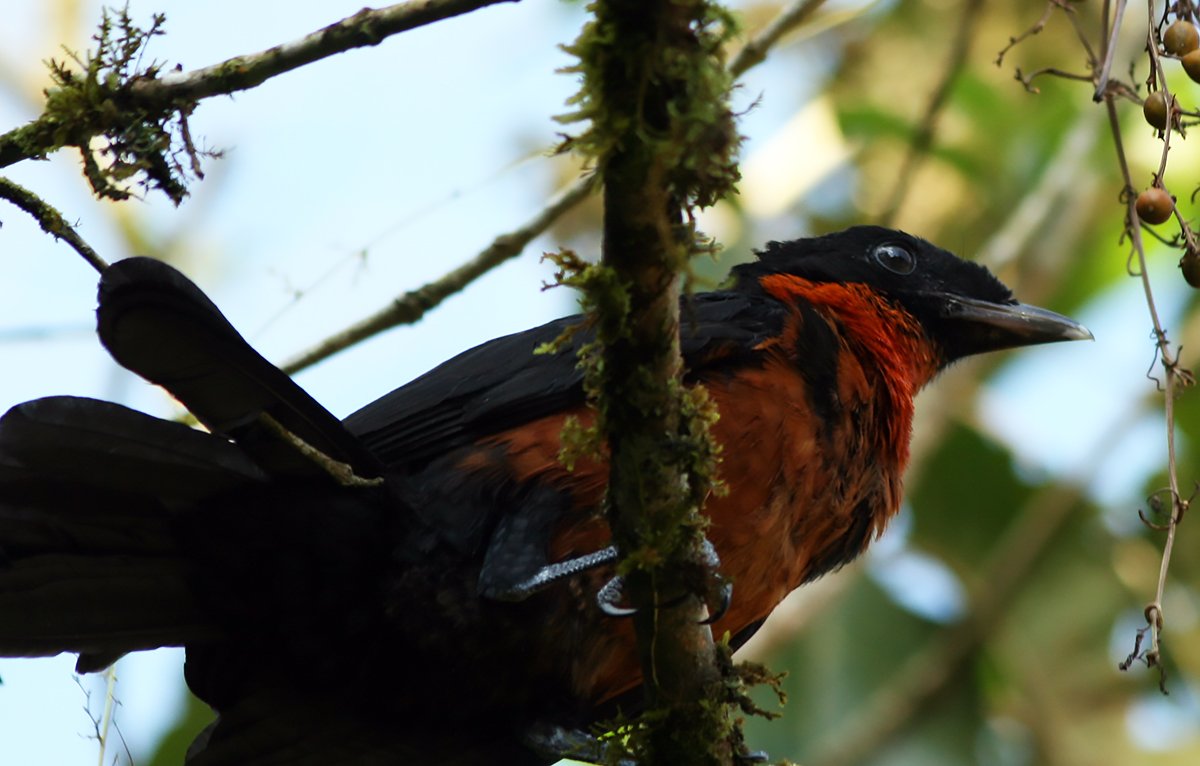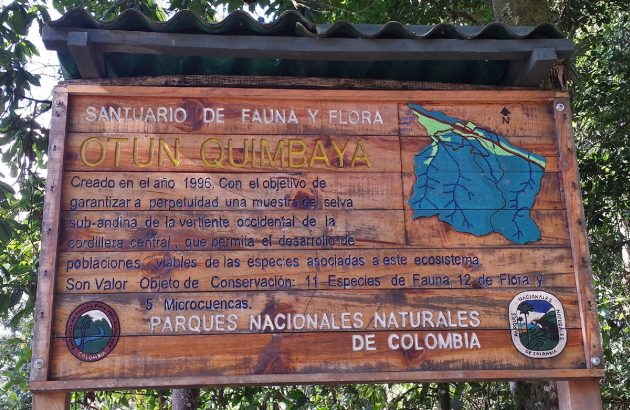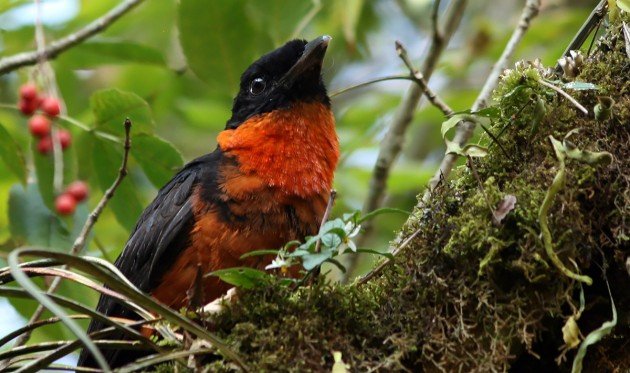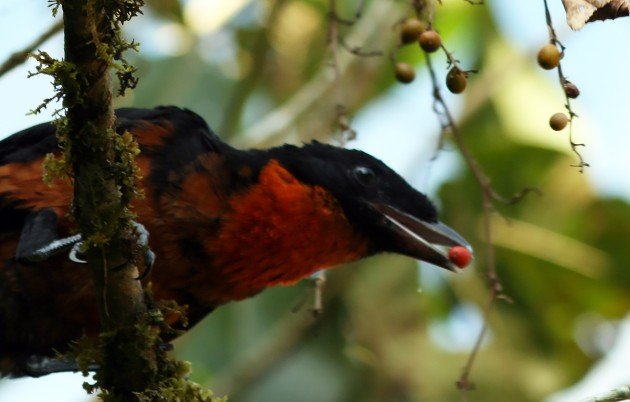
Tropical birding demands tropical birds, those families and genera unique to their latitudes rather than shared via migration across various climate zones. The American tropics surely have their share of orioles, warblers, doves, jays, and other types of birds that birders as far north as Canada or even the Arctic Circle might encounter. Sometimes, they even have the same species… I’m looking at you, House Wren! But these tropical ecosystems also harbor families that remind us by their very presence just how close we’ve come to the Equator and how far we are from the poles. You have to love the tropics for specialties like manakins, motmots, ovenbirds, woodcreepers, and tapaculos. And, of course, fruitcrows.
The Red-ruffed Fruitcrow (Pyroderus scutatus) is a big, beautiful omnivore distributed across five distinct subspecies found in specific locales ranging from the humid western cordilleras of Colombia and Ecuador to the forests of northeastern Argentina. While this low-density species may be declining across its wide range, BirdLife International still considers it of Least Concern.
Santuario de Flora y Fauna Otún Quimbaya is an exquisite national park in Risaralda, Colombia that is home to more than 300 bird species along with tons of butterflies and amazing mammals like Spectacled Bears, Red Howler Monkeys, Two-toed Sloths, and Tapirs. This pre-Andean rainforest is one of the few sites where visitors may reliably find the endemic Cauca Guan, once thought extinct and still deemed endangered for its small, fragmented population. Otún Quimbaya also happens to be one of the best places in the world to see the the brightly colored occidentalis race of the Red-ruffed Fruitcrow.
 Otún Quimbaya
Otún Quimbaya
My participation in the Proexport Colombia Avistamiento de Aves familiarity trip brought me to the Otun-Quimbaya Reserve for a day of absolutely thrilling tropical birding. One terrific aspect of this reserve is that the lodge and restaurant are run by the Asociacion Comunitaria Yarumo Blanco, basically the local community. The result is a clean and comfortable base from which to encounter all manner of Colombian rainforest specialties. Like the Red-ruffed Fruitcrow.
Of course I got great looks at the Red-ruffed Fruitcrow (as well as the Cauca Guan) right at the lodge. Encountering this stunner, one of the largest passerines in South America, raises a number of questions. The biggest one, right after you ask yourself how you got so lucky to be there in the first place, is how the bird earned its appellation. After all, the Red-ruffed Fruit Crow, known inexplicably in the fly-fishing community as the Indian Crow, is not a crow at all. In fact, although the bird looks like a crow, it is not even a corvid but rather a member of Cotingidae. So why is this bird called the Red-ruffed Fruitcrow?
Any questions?
I will always be grateful to Proexport Colombia for showing me how phenomenal birding, culture, and hospitality can be in Colombia. Muchas gracias as well to Johnnier Arango of Manakin Birding Tours for getting us on so many amazing birds!















Cauca Guan and the fruitcrow right at the lodge? I’m going there some day. What a bird! It looks like a cross between an unbrellabird and a manakin (or maybe even a cross between Godzilla and an American Robin).